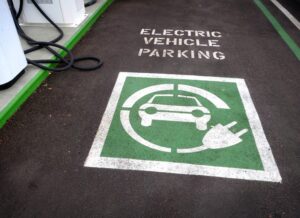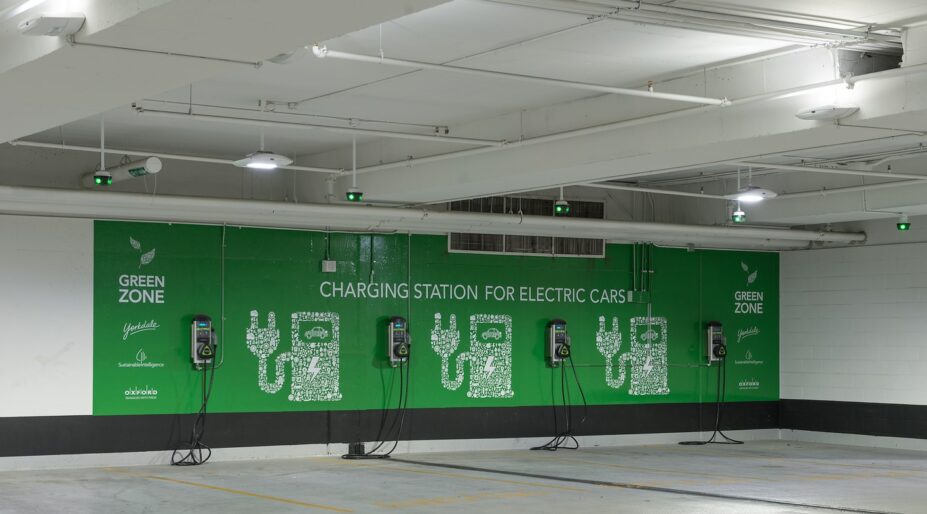In the coming decade, car manufacturers in Canada will be subject to penalties for not producing and selling the right quota of electric vehicles (EV), contributing to a rapid rise in EV ownership. Given electric-powered vehicles are heavier than their gas-fuelled counterparts, there’s a good chance Building Code requirements will be changing in the near-term to address design loads for parkades, particularly as more electric pick-up trucks and SUVs begin flooding the market.
“Currently, it’s the owner’s decision whether or not to upgrade their parkades,” says Frank Cavaliere, Managing Principal at RJC Engineers. “But new parkades being designed and constructed should, prudently, be engineered to support more load than the Code requires to provide capacity for future vehicles,” he says. “We know what’s coming—and that’s larger, heavier models, including…dare I say…electric Hummers.”
The current recommendations for acceptable floor coatings in parkades were based on lighter passenger car vehicles with pneumatic or “air-inflated” tires. As Cavaliere points out, these floor coatings are important because they are protecting the floor structure from corrosion.
“Not only are EV vehicles forecast to be heavier, but the tire types are forecast to be changing to non-pneumatic,” he says. “Non-pneumatic tires would resemble a wire-mesh frame-type, like those used for the Moon Buggy driven by the astronauts. Today these tires are quite expensive and not yet market competitive. They’ll require much less maintenance and won’t get flat, but they’ll impose much higher stresses on the floor coatings, which will need to be made stronger.”

Charging infrastructure
Weight-bearing and coating issues aside, all parkades today should have some charging infrastructure in place to meet the needs of the growing contingent of EV users. Charging stations are becoming more and more common in both private and public carparks, but they can be a source of significant demand on a building’s electrical supply.
“For stand-alone, open-air parkades that do not have outlets for engine block warmers, and where the largest power draw might be an elevator, EV charging stations represent a significant increase in the total power used in the operation of the parkade,” Cavaliere explains. “Usually, they require larger electrical services and transformers at significant capital expense to the owner. In parkades that are enclosed and attached to buildings, there is also an increase in power demand but not nearly as much as that of, say, an office or residential tower.”
While there are systems and software available that help parkade operators control when and how much power is used by charging stations—thus minimizing the peak power demands—these systems aren’t available everywhere, and in some cases the local electrical utilities regulations may impact how they can be connected to the power grid. As electrical energy providers grapple with the issue of being able to provide enough power to meet the demands of EVs, solutions in the short-term could include:
- caps on peak power supply during peak hours,
- mandates that EV charging only occur during overnight hours,
- separate services/metering for EV charging units so they can be limited or charged at different rates.
Fire prevention
Meanwhile from a safety perspective, Cavaliere says fire prevention is a primary concern given that open-air parkades generally do not have sprinkler systems—and even if they did, EVs burn too hot for standard sprinkler systems to be of any use.
“The current fire-fighting methodology is to let the fires burn themselves out while keeping them from spreading,” he explains. “Sometimes, the burning vehicles will be dragged out into the open air where they are allowed to burn until they exhaust themselves.”
Keeping in mind that all vehicle fires, whether gas-powered or electric, release an abundance of hazardous gases and materials that pose significant risk to anyone in the parkade, it’s not hard to imagine the devastation that would result from the simultaneous fire coming from a row of six EVs plugged side-by-side into charging stations. As such, Cavaliere asserts that fire-spread and fire-resistance ratings need to be investigated further, particularly due to the increased temperature at which EV vehicles burn, and the duration of those fires. His conclusion is that fire-suppression systems in parkades is one of the most important upgrades to be considered or investigated in existing parking structures.
Looking ahead
In terms of future parkades, a lot will likely have to change, including increased load-carrying capacity, improved fire-suppression systems, and increased power supply to accommodate EVs and charging stations. In other words, now is the time to plan ahead.
“In addition, the use of electric long-haul trucks will need to be considered for transportation infrastructure,” Cavaliere notes. “Since upgrading the load-carrying capacity of all transportation corridors is not a feasible option, I expect that those trucks will have their cargo-carrying ability limited to remain within current axle load limits. This means that more vehicles will be required to transport the same amount of cargo, which means even more demand on the electrical supply. Location, frequency, and speed of EV charging stations along all highways will have to increase significantly to make the large-scale use of EVs for long-distance travel and transportation reasonable.”
For more info, visit www.rjc.ca or contact Frank Cavaliere directly at fcavaliere@rjc.ca.







